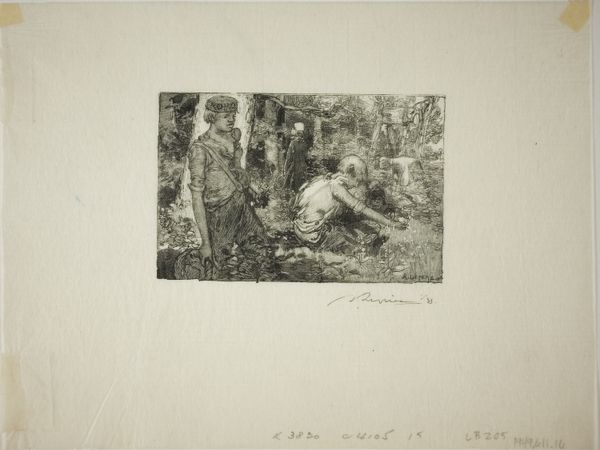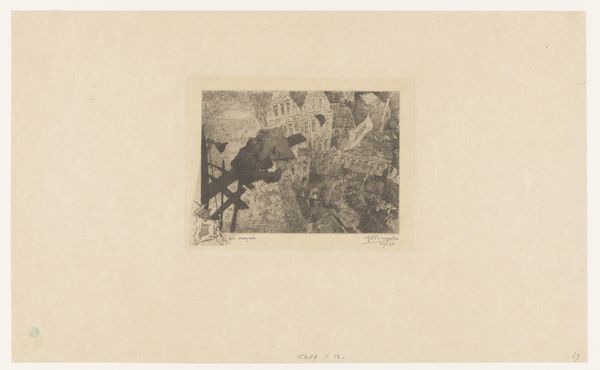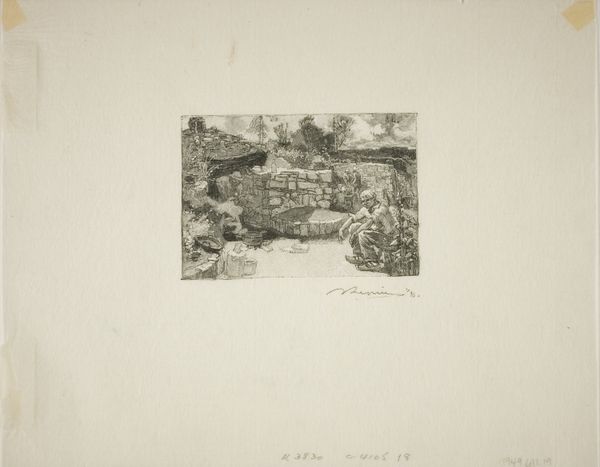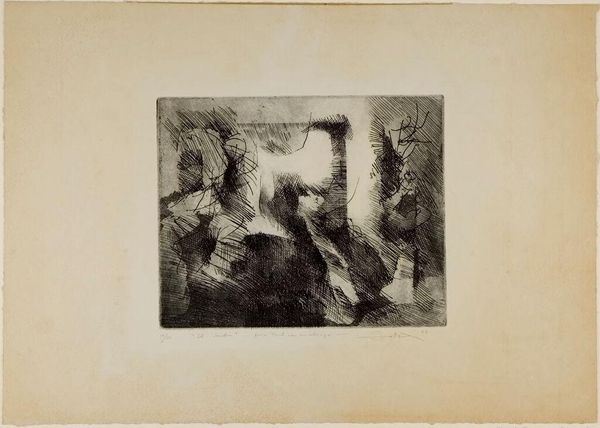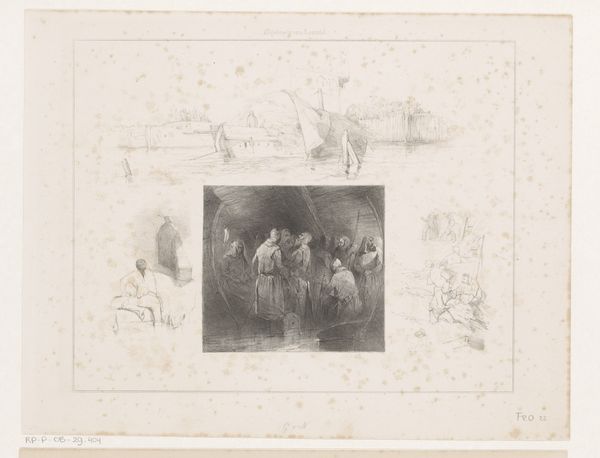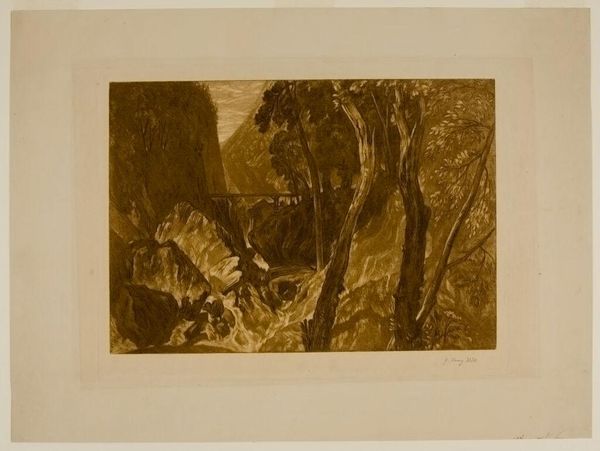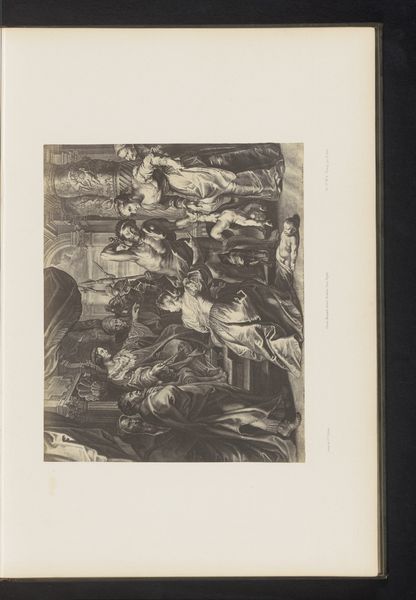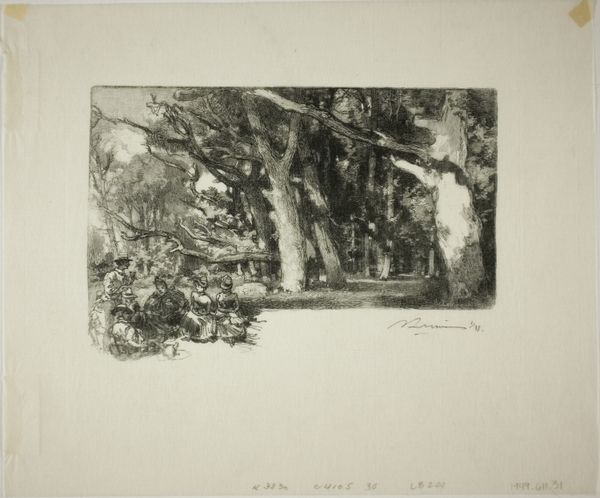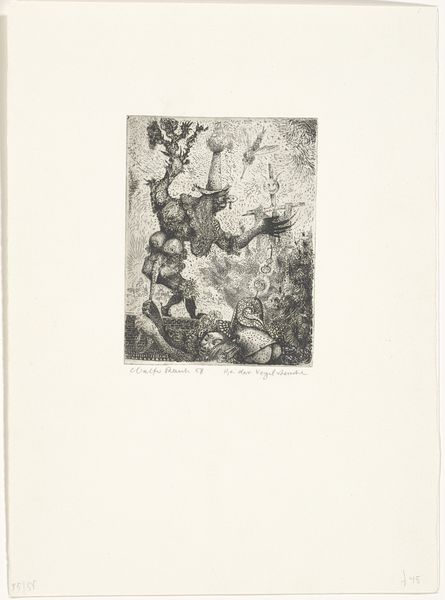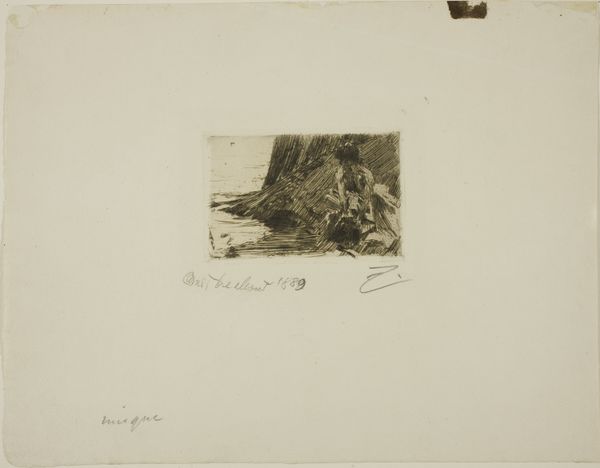
drawing, print, etching, paper, engraving
#
drawing
# print
#
etching
#
landscape
#
paper
#
france
#
engraving
Dimensions: 128 × 160 mm (image); 212 × 267 mm (sheet)
Copyright: Public Domain
Curator: Here we have Auguste-Louis Lepère’s etching and engraving, “Ride to the Hounds, Mont-Gérard,” likely created around 1908. The work plunges us into a densely wooded scene dominated by tangled branches. What's your initial take? Editor: The density is immediately striking – the chaotic yet contained feeling of the scene. The monochrome lends itself well to that feeling of being consumed by the forest. It’s almost claustrophobic, despite technically being a landscape. Curator: Lepère was a master of printmaking, reviving interest in wood engraving and etching at a time when many saw them as outdated. He often depicted scenes of Parisian life, but also, as here, rural landscapes with a strong emphasis on the working classes. Editor: It’s interesting you mention class, as my immediate response connects with hunting, an activity with specific historical class associations. Who gets to engage in the leisurely pursuit of hunting, right? The way it is rendered, in stark black and white, really makes one question the ethics of this aristocratic hobby. Curator: Hunting was indeed tied to power structures, acting as a form of control over land and resources. Lepère may be presenting it to a public with varying perspectives, acknowledging the changing social landscape. Look closely, and you’ll notice he places a lot of emphasis on texture – the roughness of bark, the bristling fur of the dogs, the layered fabric of the rider’s clothing. Editor: True, that focus makes it visceral. We’re brought into this moment. But those textural contrasts also accentuate a narrative. Consider the treatment of light and shadow. The dark thicket is full of movement as hunters weave between shadows, embodying a struggle for dominance. Is the artist complicit in this celebration, or is there an implicit critique embedded in the artistic choice? Curator: Lepère aimed to document modern life across its strata. The composition, with its high horizon line and cropping, suggests he might have wanted to convey immediacy— a sense of being right there with the hunt. In his broader work, there is less moral commentary, and more documenting modern life and its intersection of activities like leisure. Editor: But, let’s not ignore that by simply portraying this subject, he inherently participates in its legacy, making it critical for the audience to see the work not just as a picture but as a cultural marker, that reinforces specific power relations, visible or not. Curator: Well, either way, “Ride to the Hounds, Mont-Gérard” invites contemplation of not only Lepère's technical skills, but also the complex relationship between humans, nature, and social hierarchies that defined that era. Editor: Absolutely, a lot is happening here on the surface, which then prompts more interrogation of the underlying ideologies around land ownership and privilege.
Comments
No comments
Be the first to comment and join the conversation on the ultimate creative platform.
